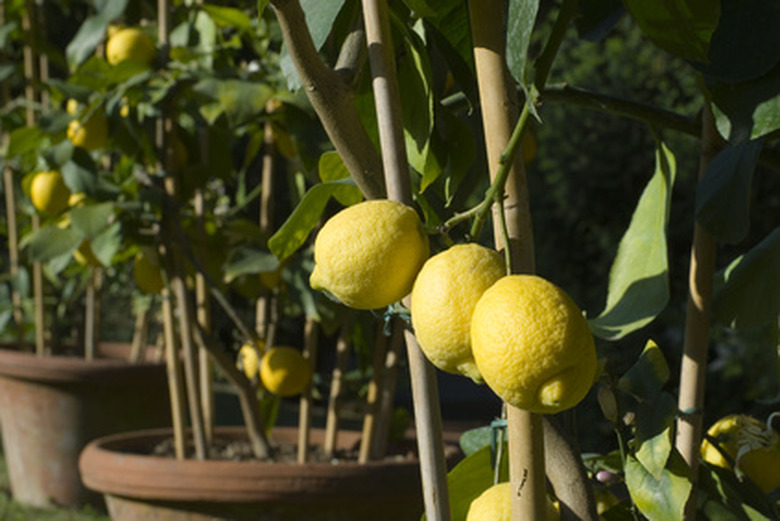How To Make A Bonsai Lemon Tree
Things Needed
- Potting container
- Potting soil
- Gravel
- Pruning shears
In the natural environment, a lemon tree can reach mature heights up to 20 feet. It produces rich green foliage with fragrant white blooms and acidic yellow fruit. A lemon bonsai maintains the same rich green foliage, fragrant blooms and fruit in a much smaller variation. True lemon bonsais aren't dwarf lemon trees, but rather normal sized trees grown in miniature versions.
Step 1
Select a well-drained potting container that is about 2 inches larger in width and depth than your tree's root ball. For larger lemon bonsais, choose a 15-gallon pot or a Versailles planter, as recommended by the Bonsai Gardener. Make sure that the container has several drainage holes to provide an even release of excess water from the container.
- In the natural environment, a lemon tree can reach mature heights up to 20 feet.
- For larger lemon bonsais, choose a 15-gallon pot or a Versailles planter, as recommended by the Bonsai Gardener.
Step 2
Apply a thin layer of stones or gravel at the bottom of the container for good drainage, as recommended by Tree Help.
Step 3
Fill the pot with an acidic loam soil to match the tree's natural environment. Choose a nutrient-rich potting soil mix that is designed for acidic-loving plants or select a potting mix that is peat moss based.
Step 4
Plant the lemon tree in the prepared container. Cover the lemon tree's roots with soil and press the soil firmly around the tree to ensure its upright position.
Step 5
Irrigate your newly planted lemon bonsai deeply to promote a good establishment. Irrigate your bonsai slowly until the water flows evenly from the bottom of the container. Maintain an even soil moisture, but allow the lemon bonsai to dry slightly between each watering.
- Apply a thin layer of stones or gravel at the bottom of the container for good drainage, as recommended by Tree Help.
- Maintain an even soil moisture, but allow the lemon bonsai to dry slightly between each watering.
Step 6
Place the lemon bonsai in a warm, sunny location. Select a location that receives at least eight hours of full sunlight each day. Choose a location with fairly warm nightly temperatures that fall no lower than 55 degrees F. Lemon trees are naturally cold tender, so bring your lemon bonsai indoor when temperatures approach these temperatures.
Step 7
Prune your lemon bonsai in the early spring, just before the growing season begins. Use sharp, sterile pruning shears to remove any dead, dying or diseased branches, as recommended by the Bonsai Gardener. Develop the shape of your lemon bonsai gradually over several years to prevent die back and stunted growth.
